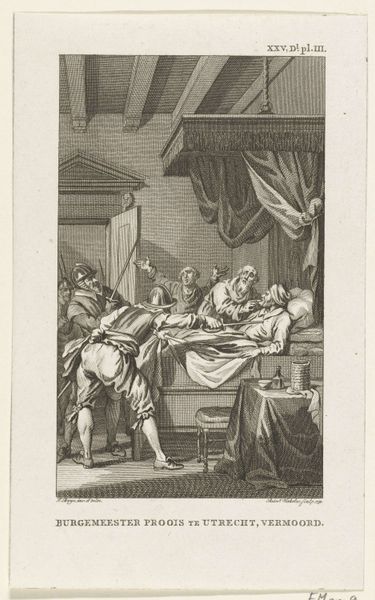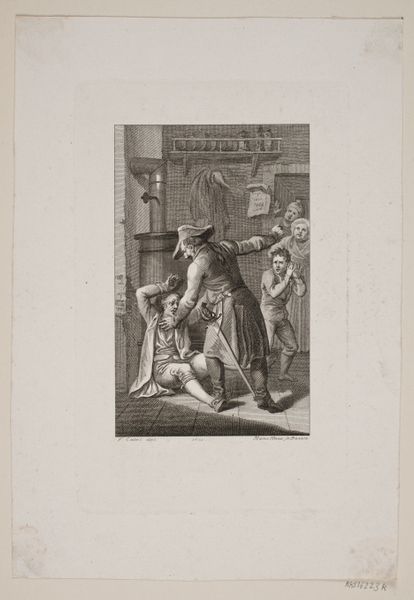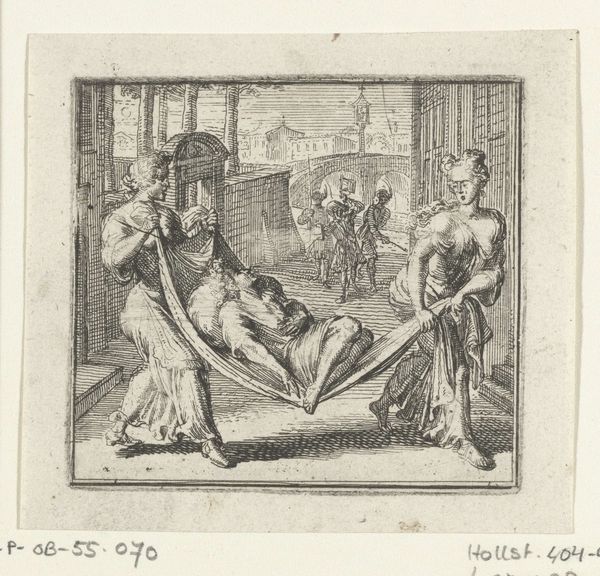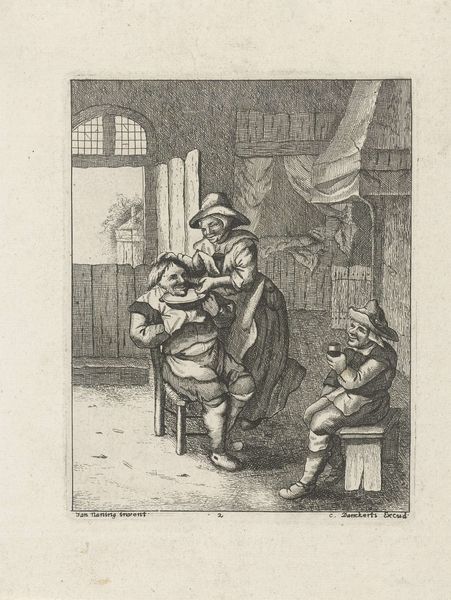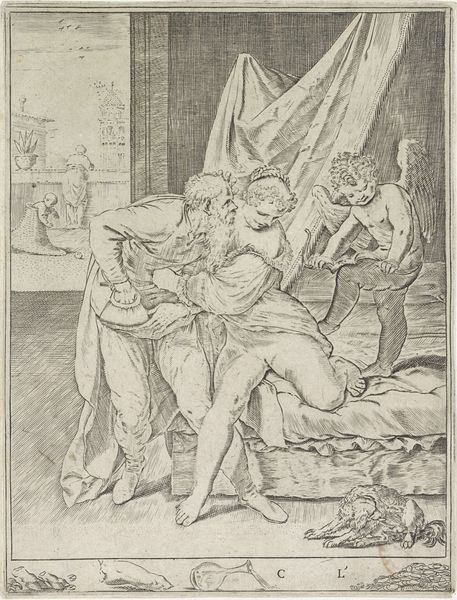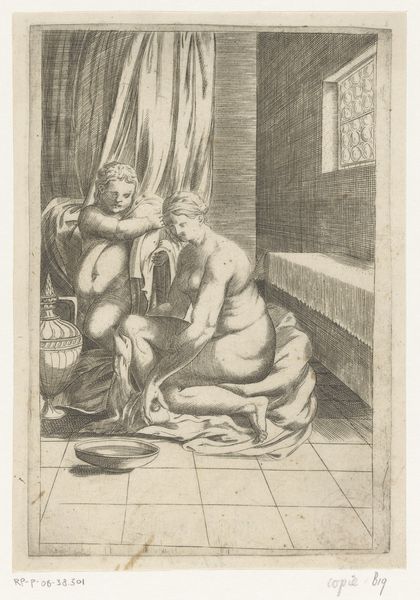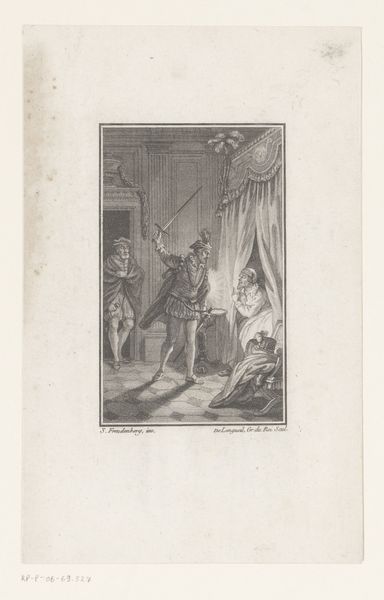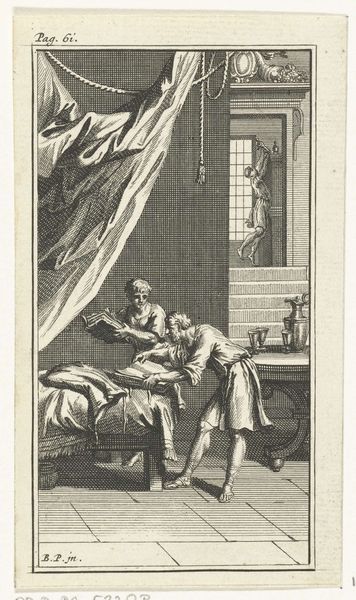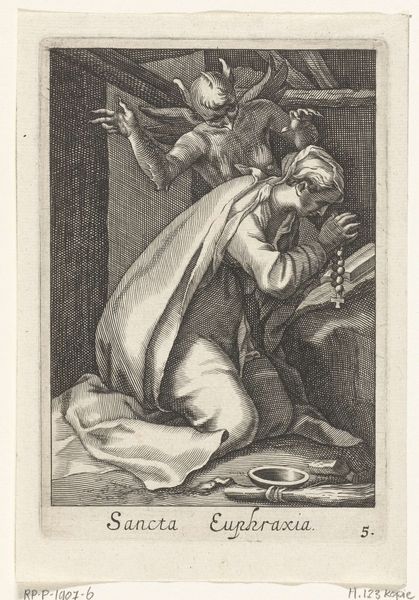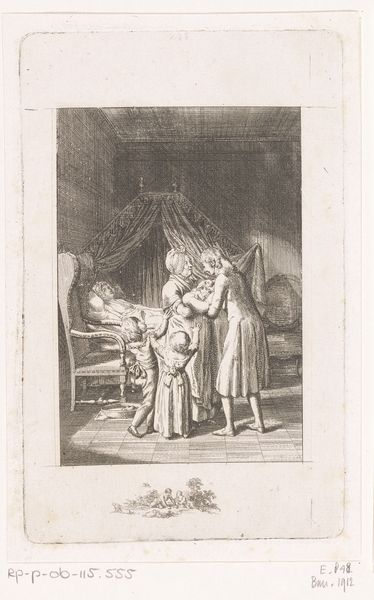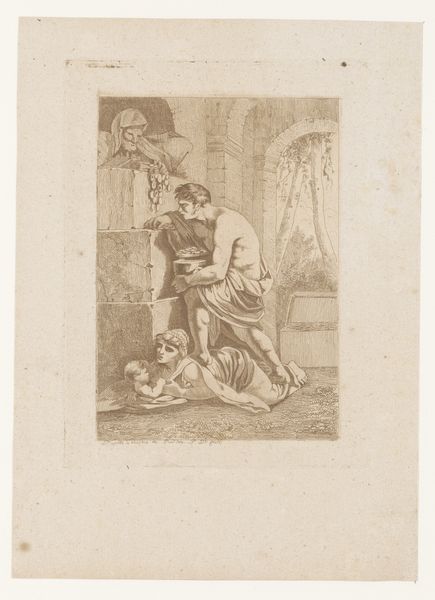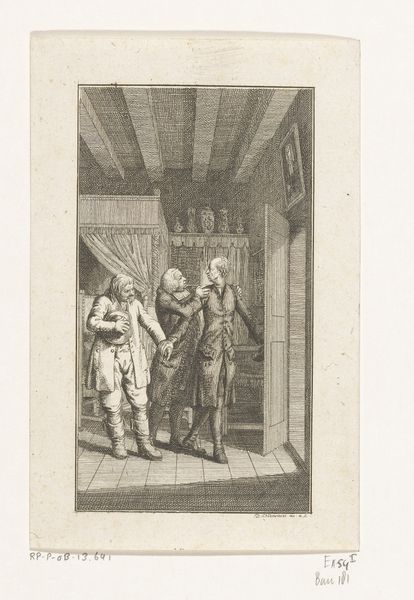
Albrecht Beiling neemt afscheid van vrouw en kind, 1426 1842 - 1844
0:00
0:00
print, engraving
#
portrait
# print
#
figuration
#
romanticism
#
genre-painting
#
history-painting
#
engraving
Dimensions: height mm, width mm
Copyright: Rijks Museum: Open Domain
Curator: Standing here, we have "Albrecht Beiling takes leave of wife and child, 1426," a print made by Reinier Vinkeles between 1842 and 1844, currently residing here at the Rijksmuseum. Editor: Heavens, that is dramatic! The poor woman looks utterly faint. It feels theatrical, in that deeply sorrowful, operatic way. I wonder what Albrecht is off to do… not pleasant, I imagine. Curator: This work offers an interesting lens on 19th-century interpretations of historical narrative, and demonstrates Romanticism's fascination with emotional intensity, domesticity, and personal crisis amidst grand historical narratives. Note the fineness of line achieved through engraving, enabling subtle gradations of light and shadow, key to constructing drama here. Editor: Indeed. The use of light certainly directs our gaze to the emotional core – the distraught wife, the stoic husband. I'm curious, though, what everyday print consumption looked like when an image like this was newly produced. Was it a news illustration, or hung framed on walls like photographs? Curator: These images played a significant role in disseminating visual representations of history. Prints such as this facilitated widespread access to visual culture, playing an active part in how stories were communicated in nineteenth century society. It allowed access for broader layers of the public. This wasn't the 'high art' painting hung in a gallery for elite audiences; engravings and prints circulated widely through society. Editor: It's rather chilling, in the sense that Albrecht is holding their child with one arm but paying attention to his wife that passed out. Maybe off to a senseless, endless war and his family knows they will never see him again. One does hope the child never forgets what his father looks like and feels loved and protected as much as humanly possible given the setting... Curator: This print makes us consider the mechanisms that perpetuate and commemorate specific accounts of the past, while it gives viewers a moment for intimate emotion that can move us centuries later. Editor: Precisely, Albrecht's goodbye stays printed.
Comments
No comments
Be the first to comment and join the conversation on the ultimate creative platform.
